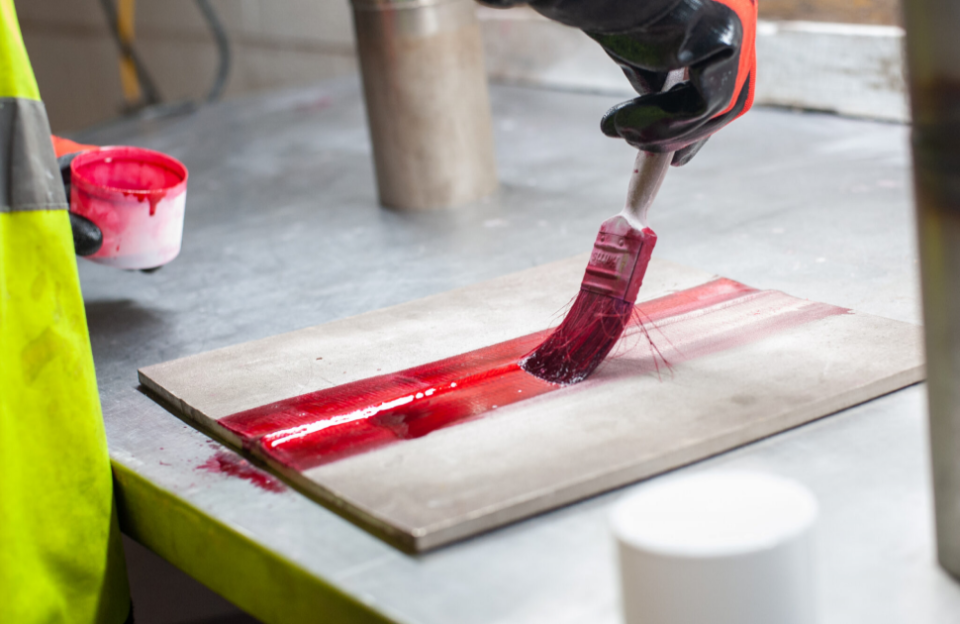Liquid Penetrant Testing (LPT) is a widely used non-destructive testing method employed in the welding industry to detect surface-breaking defects in materials. This technique is crucial for ensuring the structural integrity and safety of welded components. Explore the key principles of Liquid Penetrant tests for welding.
Surface Preparation:
The success of Liquid Penetrant Testing relies heavily on proper surface preparation. Before applying the penetrant, the surface must be thoroughly cleaned and free from any contaminants, such as dirt, grease, or rust during tests for welding. This step is essential to ensure that the penetrant can effectively seep into potential defects and provide accurate results.
Penetrant Application:
Once the surface is prepared, the liquid penetrant is applied evenly over the weld area. The penetrant used in this method is often a brightly colored liquid with high surface wetting properties. The penetrant is left on the surface for a specified dwell time to allow it to seep into any open discontinuities or defects in the welded material.
Penetrant Dwell Time:
The dwell time is a critical parameter in Liquid Penetrant Testing. It is the duration during which the penetrant remains in contact with the surface. This period allows the penetrant to flow into cracks, pores, or other defects, maximizing the chances of detection. Dwell times can vary based on the material being tested and the specific penetrant used, and it is essential to follow the recommended guidelines.
Excess Penetrant Removal:
After the dwell time, the excess penetrant is carefully removed from the surface. This is typically done using a cleaner or emulsifier, which helps draw the penetrant out of the defects while leaving minimal residue on the surface. Thorough removal of excess penetrant is crucial to prevent false indications during subsequent inspection steps.
Developer Application:
Following excess penetrant removal, a developer is applied to the surface. The developer acts as a contrasting medium, drawing the trapped penetrant out of defects and creating visible indications. The developer is usually a white, powdery substance that adheres to the penetrant, highlighting the defects for easy identification.
Inspection and Interpretation:
The final step involves inspecting the developed surface under appropriate lighting conditions. Trained inspectors carefully examine the indications, which appear as vividly colored patterns against the contrasting background. The inspector’s expertise is crucial in distinguishing between acceptable surface features and actual defects, ensuring accurate interpretation of the results.
Liquid Penetrant Testing is a valuable tool in welding quality assurance, helping identify surface defects that could compromise the integrity of welded components. Adhering to these key principles ensures the effectiveness and reliability of the testing process, contributing to the overall safety and performance of welded structures.

